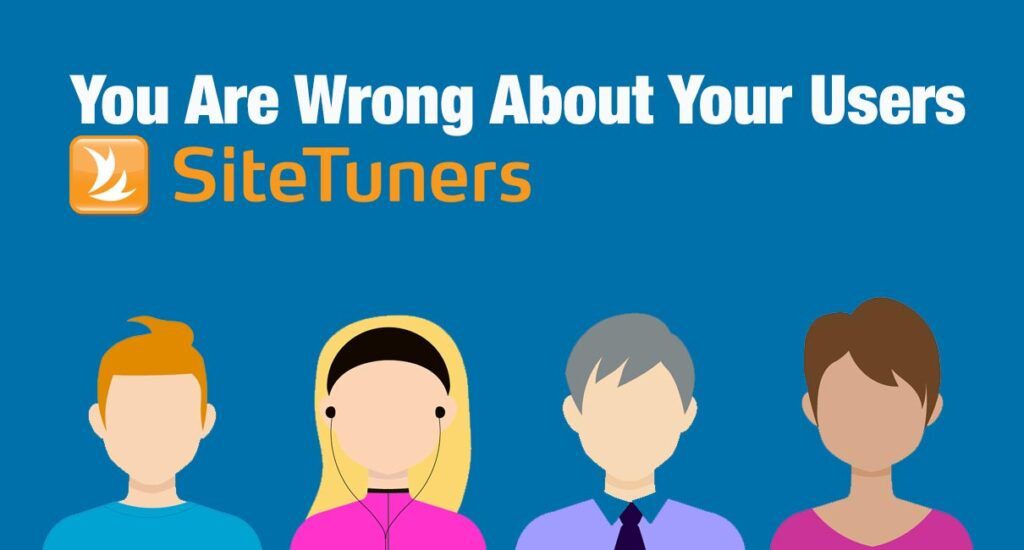Personalized. Customizable. Dynamically-served.
Those things have come to develop strange relationships with online marketers.
On the one hand, they’re great. They promise closer relationships to the visitors, better user experience, and higher conversions.
On the other hand, they’re darned curses. It’s tough to tell just how much effort to invest in personalization, customization options, and dynamically-served content. And each field has enough pitfalls and maintenance headaches for an army of marketers. What’s a small team to do?
The question a lot of marketers need to ask themselves is, just how dynamic should the web site be?
First, Let’s Untangle the Terms
Before we get to which of those three things is right for you and how much you should nibble on, let’s go through what each of those things mean.
- Personalization is a system-generated difference between groups.
- When the web site serves different ads to new and returning visitors because the content management system understands which group is which, the web site is personalized.
- Customization is a user-generated change on the site.
- When the user selects interests and the articles served by the web site changes to match the user preference, the web site is customizable.
- Dynamically-served content is a technology-driven solution to serve different pieces of content on the same URL.
- When champion and challenger pages get served to users for split tests, or when the content changes based on the company visiting the web site, the company uses dynamically-served content.
Ready? Let’s dive in.
Personalization
In many ways, personalization is the holy grail of the omni-channel digital experience. You should serve different experiences to people on the desktop versus on their smartphone. You should serve different content to people from North America versus visitors from Asia. Depending on how large you are, you may want to serve different content to hot leads versus first-time visitors. And on and on.
Pitfalls
The problem with personalization is, generally, diminishing returns.
- For a Fortune 500 company with a large international presence, it may make sense to have separate grouping by country, by number of visits, and by previous actions taken, like purchases and blog visits.
- For organizations smaller than that, it may make sense only to group by regions like North America, Europe, Asia, etc., and do only basic behavior-based changes, like not serving ads about things they have already purchased.
- For SMEs, it may be too resource-intensive to divide by anything more complex than mobile versus desktop, and an international strategy may not make sense to tackle since it’s a US-only business.
When is this right for you?
There’s a minimum amount of personalization required in today’s world – your web site should be decent to view from mobile phones all the way to desktops. Everything else is a negotiation.
How much of it should you do?
Personalization is great, but it’s easy to bite off more than you can chew. Unless you have a large, pre-existing Adobe, Sitecore or similar content management system (CMS) with tons of integrations, it’s best to nibble, then check if you have the resources to carry out what you need to do.
Don’t abandon your CMS to pursue greater personalization if you’re not staffed to handle the added complexity.
Ramp up slow, and obsess about maximizing your current tools.
Customization
Customization is definitely more of a corner-case compared to personalization, but the need for it might be wider than you think. You should definitely consult your analytics tools to check how different your users are before working on allowing them to customize your site.
Pitfalls
The obvious drawback is, despite all the work that you’ll be putting into allowing users to view results as grids or lists, or allowing visitors to select a country other than their own for prices when they travel, a lot of people may never find out those options are there.
People spend most of their time on other web sites – unless you’ve carved out a nice piece of real estate in their weekly schedules, this might not be the best use of your time.
When is this right for you?
Customizability is great for content sites, so if you’re really working on your top-of-the-funnel experience, this may not be a bad investment. Likewise, simple forms of customization might be great on your category pages – allowing power users to view by list or grid may give you a lift.
How much of it should you do?
As with personalization, you shouldn’t change platforms or anything to pursue greater customization options for your users. For most sites, it’s garnish rather than the main course.
Test small things first, like grid versus list, then work our way up. If you have a broken user experience somewhere, prioritize those first, then work on customization options.
Dynamically Served Content
Dynamically-served content comes in many shapes and sizes, the most important ones arguably things like split tests and multivariate tests. For web sites with enough traffic and conversions, these can spell the difference between significant success and utter failure.
Pitfalls
Companies looking to sell you on the value of split tests or database-driven content insertions don’t want to tell you this, but dynamic content is not for everyone.
- If you don’t have enough traffic or conversions to run the tests you need to run, you should not run split tests
- If you haven’t optimized everything on your site except the last mile, you probably shouldn’t be doing dynamic content insertions based on things like the organization your visitor belongs to
When is this right for you?
Obviously, testing is a very important part of the optimization process for larger sites. If you don’t need months to get statistically relevant results for one split test, you should probably have an active test at any given time.
Likewise, if large enterprises are your key demographic, it may be worth investigating how you can put that personalized message for Verizon and AT&T upon their first visit.
How much of it should you do?
If you have the size for it, you should be running tests at any given time, but not a ton of them. For dynamic insertion, most companies should probably keep it to a minimum.
Putting It All Together
Dynamic content is great, but only if you know what you’re doing.
You should have an honest assessment of what the company is staffed to support and what the expertise of the team members can allow for, then decide on a strategy from there.
Remember to ramp up slow. Don’t throw away your CMS for something shinier until you’ve maximized your current platform and you’ve proven that what you need cannot be done with your existing system.
If you know how much personalization, customization, and dynamically-served content to tackle, you’ll have significant advantages over the other players in your industry.



